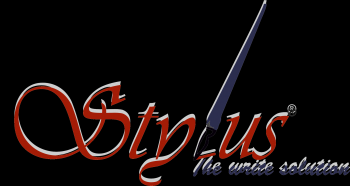How to Present Content?

Creating a good piece of write-upcontains few dimensions of its own. If you think you have covered some ground with the actual text, there is much more to be done. Irrespective of whether you are a content writer, technical writer, or blog writer, you need to present your text in the best possible form to engage your target audience. E-Learning course development requires a comparatively higher degree of variations in presenting content.
According to the demographic, a writer can choose to emphasize between differentelements of the content. How we present our content is as much (or more) of a differentiator as the content itself. It’s the experience we give to the audience that makes them pay attention and come back for more.
In totality however, the content could be presented with respect to following factors:
Paragraph
Each and every paragraph in your content must be strong enough to express your exact intent. This is why you need to have a clear message. Don’t make the readers work hard to acquire your message.
Each paragraph thereafter must be a smaller part of a bigger picture. Individually a paragraph must be complete running through a single idea.
Arrange these series of ideas in some logical order by prioritizing the information to keep the content comprehensive enough. Establish what you want your readers to see first, second, third, and so on.The reader should understand the natural progression of your thought and the exact route to get to the conclusion.
Images
Our visual sense is the strongest of all senses, forming the greater portion of our judgement in a given situation. So, if you can identify the key pointswithin the content, you can always make use of images to convey the exact thought. Be sure to use high quality pictures taken by a professional, as will lend you a similar level of credibility. There are many places where images can be used.
For Example:
“Use headshots of the board of directors and management in the biography section. Providing a photo puts a face to the name.”
Tables
Tables are pretty helpful in presenting any form of data in a concise format. Readers can quickly get an overview regarding the key parametersinvolved in your content.
Keep the number of tables adequate enough and place thoseacross the key points. Providesufficiently descriptive and accurate categories and keep sufficient spacing in-between, so not to clutter-up a table. Also, make sure to provide meaningful column and row headers to define the content covered in the table.
Charts
If you think that the key points can be expressed best in a chart form, don’t hesitate to add one. You can provide tables by setting out the figures, and you can also talk about numbers and percentages forever. However, the chances are that your point will be lost if you rely on these alone.
Put up a graph or a chart, and suddenly everything you're saying makes sense! Choose the right type of chart to get a better appeal and to accommodate all the parameters involved.
Provide a descriptive chart title and label the parameters in such way, that there isno confusion. Position your chart and labelssuch that you the text is not crammed in between.
Graphics
Communicating ideas whether its simple text or rich multimedia, can be powerful and sticky by achieving two simple things:
• Your ideas should be memorable
• The content should be shareable
If you could pair your information with corresponding visualization, you could grab attention among the general audience. Use visually appealing icons, menus and logos for this purpose. Get yourself some info-graphics or motion graphics to represent your data better. It could be illustrations or cartoons placed properly within the text.
Flowcharts
Flowcharts give you the gist of a process in a single glimpse. Identify your core conceptsand that will help to prepare the ideal layout for your data. In your flowchart, separate complex process and highlight the main points. If a flowchart is too long, you can break it into multiple flowcharts. However, make sure to use the correct shapes to represent data. Each shape in a flowchart represents a meaning, for example, a diamond represents a condition.
Hyperlinks
If you need your reader to gothrough the hyperlinks, you will need to make them distinctive enough. The proper use of hyperlinks can certainly aid readability. Keep away from the generic ‘Click here’ link text and try to incite reader to take the action. Keep the text in a different colour and address your reader directly. Users shouldn't have to guess or scrub the page to find out where they can click. You can provide hyperlinks to link to content within the same page/file or across websites/files.
Formatting
Apply strategic formatting for your text that helps you emphasis on your key points. Another effective way to instantly improve the visual friendliness of your content is to simply break up and organize your text.
For example:
• Try breaking up a paragraph into bulleted points
• Highlight essential information in bold and italics
Provide the proper indentation and bold formatting, to help a reader scanthrough your content easily. It is equally important to apply the same style of formatting throughout the piece of content.
Content writers in Mumbai are getting increasingly aware of the importance of presenting content, and are working in coordination with graphic designers to complete their piece of work. Writing today is not simply restricted to the use of words and goes beyond to include graphics and formatting.
